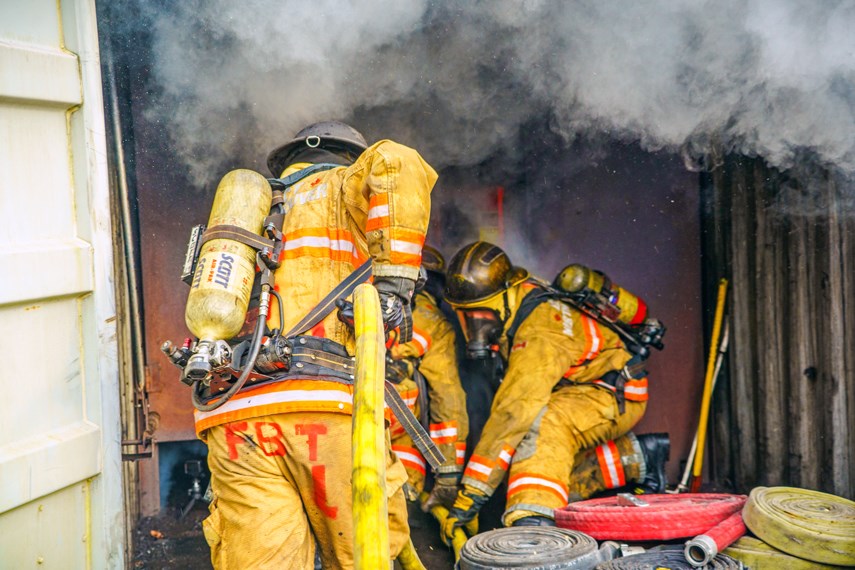A small group of probationary firefighters with District of North Vancouver Fire and Rescues Services are well into their customary nine-week training program, though there aren’t as many recruits participating together at once due to the pandemic.
“Normally we’ll train together, but because of COVID we haven’t been doing any interdepartment training at all,” said Bradley Gaudette, assistant chief of training and professional development with the department.
In a typical year, the District of North Vancouver’s fire department runs its training program in tandem with North Vancouver City Fire Department and District of West Vancouver Fire and Rescue Services.
Much of the training takes place at the District of North Vancouver’s Fire Training Centre on St. Denis Avenue, as well as at other natural locales around the North Shore such as Lynn Canyon or Capilano River.
“We’re each doing our own thing. We still communicate and make sure we’re teaching the same things, but we’re not actually physically training together,” said Gaudette, who added that training instructors from all three departments are still meeting up to ensure there’s continuity with the fire training.
“We like to train together like we play. Not being able to do that is definitely not the best situation,” said Gaudette. “Even though we’re not physically training together, we’re still training on the same stuff.”
The four probationary firefighters taking part in the department’s training program now have already tackled a bevy of exercises designed to show new hires every challenge they can expect to face on the job.
They’ll learn everything from managing their equipment, deploying a fire hose and attaching it to a hydrant, operating ladders, search and rescues techniques, and the department’s fire attack system, as well as didactic parts such as how to teach the community about public safety and fire safety in an educational role.
And if you happen to notice North Vancouver firefighters dangling from a high place any time during the coming weeks, there’s a good chance they’re participating in the rope rescue training part of the program, where they learn a highly technical level of detail when it comes to various rescue scenarios, according to Gaudette.
Besides limiting the number of participants from across fire departments in the training programs, Gaudette said there are a number of COVID-safety protocols in place at District of North Vancouver Fire and Rescues Services, such as temperature checks, physical-distancing measures, and wearing personal protective equipment around the department.
When it comes to taking emergency fire calls, firefighters typically wear a self-contained breathing apparatus, often called a SCBA mask, which provides clean, breathable air.
In past years, the department didn’t mandate its firefighters wear their SCBA during all parts of a call-out, such as arriving on scene or attaching a hose to a hydrant, but that’s changed during COVID, said Gaudette.
“Now we’re getting our firefighters to put the mask on as they leave the truck so all the in-between actions before they’re in the fire, they’re actually protected from each other as well,” he said.



.jpg;w=120;h=80;mode=crop)